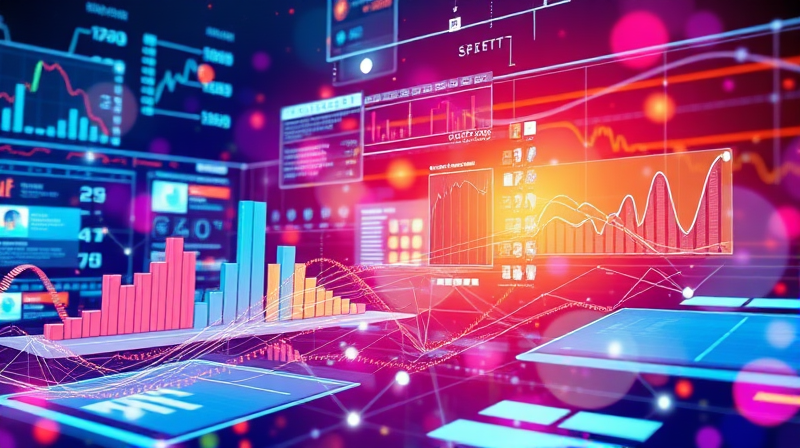In an era overflowing with data and endless streams of information, it has become essential to be able to distinguish between noise and the messages that truly matter. Organizations and industries worldwide are continuously evolving by harnessing advanced technological strategies to focus on what is truly relevant. The ability to extract critical details while filtering out unnecessary static details is fundamental to enhancing decision-making processes and driving innovation.
Every sector—from healthcare to finance, research to enterprise—faces the challenge of managing large volumes of data. However, the emergence of smart data extraction techniques has allowed professionals to prioritize key insights that can lead to improved efficiency and groundbreaking solutions. This article outlines how these innovative strategies are reshaping our approach to information management.
The Power of Precise Data Extraction
With global data rapidly growing in size and complexity, methodologies such as API integration, web scraping, machine learning, and ETL tools have become more than just buzzwords. They represent a shift in how we capture data and transform it into actionable intelligence. Adopting these tools properly can be transformative for businesses and critical sectors.
Some key technologies to focus on include:
- API Integration: APIs are indispensable because they provide real-time access to well-structured data streams. This ensures that integration between systems remains seamless and efficient.
- Web Scraping: Utilizing AI-powered scraping tools not only extracts semi-structured data accurately, but also does so with a high level of compliance and respect for privacy.
- Machine Learning (ML): ML leverages techniques like Optical Character Recognition (OCR) and Natural Language Processing (NLP) to process unstructured data with impressive accuracies, dramatically reducing the margin for human error.
- ETL Tools: These tools are crucial for dealing with vast and varied data sources. Platforms like Apache NiFi and Fivetran enable scalable and consistent data management, making sure that the right information is available when it is needed.
Experimenting and iterating upon these approaches in your data management strategy highlights a key message: focus matters. In an environment where millions of data points continuously flow in, the true challenge lies in filtering out the noise and spotlighting the signals that herald change or demand attention.
Vital Updates in Healthcare and Beyond
Healthcare is one of the most dynamic sectors when it comes to integrating data-centric technologies. With tools for monitoring and interpreting vital signs, healthcare providers are better equipped than ever to make life-saving decisions quickly. Timely updates can mean the difference between early intervention and critical escalation.
Modern health systems are now able to monitor patients continuously, gathering data on heart rate, temperature, oxygen levels, and other critical signs. This shift means that static and infrequent measurements are giving way to dynamic, real-time health monitoring, which enables clinicians to detect and react to subtle changes long before they become emergencies.
Key developments in healthcare include:
- Advanced Monitoring Systems: These systems gather data continuously, helping to predict potential issues through trend analysis. By tracking vital sign trajectories over time, healthcare professionals can anticipate problems and tailor interventions more effectively.
- Enhanced Early-warning Models: With the help of data-driven early-warning systems, monitoring shifts from periodic checks to ongoing scrutiny, ensuring that trends in patient health become the basis for rapid response and treatment alterations when necessary.
The healthcare industry is a prime example of how harnessing data effectively can improve outcomes, saving lives and reducing the burden on medical staff while ensuring that critical changes are observed in real time.
Beyond healthcare, sectors like finance and enterprise are also benefiting immensely from automated data extraction methods. Real-time data handling powered by regular updates and no-code tools simplifies complex document processing, making operations more agile and responsive.
Bringing It All Together: Key Takeaways
When it comes to filtering out unnecessary details and emphasizing vital updates, a few core lessons emerge that are applicable across industries:
- Embrace Artificial Intelligence and Machine Learning: These technologies enable the detection of subtle patterns in vast datasets that might escape human notice. They streamline operations and improve precision considerably.
- Value Real-Time Systems: Systems that provide continuous data updates transform reactive methodologies into truly predictive strategies. This shift empowers organizations to act before issues escalate into crises.
- Select Tools Purposefully: Matching the right tool to the specific data needs—using APIs for structured data, ML for unstructured sources, and ETL tools for ensuring redundancy and scalability—leads to optimal outcomes.
Focusing on what truly matters in today’s data-dense world is more than a strategy—it is the backbone of innovation and efficiency. By prioritizing the extraction of actionable insights and filtering out the clutter, businesses and industries can be more responsive and agile in an ever-changing environment.
Learning to filter out unnecessary details is not just a technical challenge, but also a mindset. It requires continuous adaptation and a commitment to harnessing the best available technologies. Every decision becomes sharper, every strategy more focused, and every outcome more successful when such practices are applied conscientiously.
This focused approach inspires confidence in decision-makers. When organizations can count on receiving timely and accurate updates, they are empowered to push the boundaries of what is possible. Whether you are a business leader, a healthcare professional, or an innovator in the financial sector, adopting these techniques paves the way for unprecedented levels of impact and clarity.
The future belongs to those who can separate the signal from the noise. Embrace this inspiring journey of transformative data handling and let it drive you towards a future where every byte of information counts.







